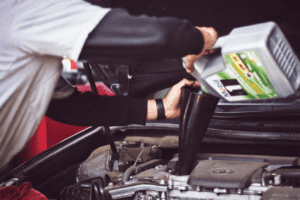Leasing cars has become an increasingly popular option for people that are looking for flexibility and affordability, giving them access to driving a brand-new vehicle without long-term commitment. But with a lot of leasing options available, navigating this can become confusing. In this blog, we will look at some of these methods of car leasing for an easier experience.
Traditional Leasing
Traditional leasing is one of the more well-known approaches, involving an agreement between lessee (you) and dealership or leasing agency. This method requires an upfront payment and fixed monthly instalments over the lease term, which can be typically around 24 to 48 months.
Traditional leasing provides predictable costs, reduced maintenance worries due to warranty coverage and access to new models every few years. This is perfect for those who prioritize consistency in their financial planning as well as accessing cutting-edge automotive features. Traditional lease agreements may seem less attractive for high-mileage drivers or those with unpredictable usage patterns due to mileage restrictions and potential wear and tear penalties.

Salary Sacrifice Car Scheme
A salary sacrifice car scheme offers an alternative approach to driving through an employer. Under these agreements between companies like Pink Car Leasing and employees, employees surrender part of their salary in return for driving a car from them. Recently, this scheme has grown increasingly popular due to the many financial benefits it can bring and because of its greater flexibility than traditional leasing or ownership options.
Salary sacrifice car schemes may be particularly appealing for employees looking for low-emission or electric vehicles that offer additional tax incentives.
Lease Purchase
Lease purchase can be a good solution for those looking for the freedom and control that comes with leasing while also owning their vehicle at the end of their term. Lease purchase involves monthly payments similar to traditional leasing, with an added balloon payment at the end of the lease to transfer full ownership of the vehicle. Lease purchase provides access to vehicles without incurring large upfront costs associated with purchasing them outright.
Lease purchase provides freedom from mileage restrictions once the ownership has been transferred. However, careful financial planning must be done due to a substantial balloon payment and risk of depreciation once the car passes to you as the owner. Lease purchase offers the best of both leasing and ownership.

Personal Contract Hire (PCH)
Personal Contract Hire (PCH) is a more popular method that involves leasing a car without the option to own it at its end of lease term. PCH leasing provides a cost-effective method of owning a vehicle over an agreed term, with payments often lower than traditional car finance agreements. Also, maintenance packages often come included to prevent unexpected repair expenses.
PCH Leasing Services provide an ideal option for anyone wanting to avoid the depreciation associated with car ownership, although up-front costs may be higher and exceeding mileage limits or damaging the vehicle could incur additional fees. PCH’s leasing agreements offer straightforward leasing arrangements that do not lead to purchasing at the end of their lease period.
Conclusion
Leasing a car gives you multiple avenues, each with their own advantages and drawbacks. From traditional leasing, salary sacrifice car scheme or lease purchase, understanding these options makes finding the appropriate solution much less confusing.
Each person’s needs should dictate which option is most beneficial, so careful evaluation should be conducted when choosing your leasing option. When you have considered the financial priorities, lifestyle needs, and usage frequency it becomes easy to choose a leasing option.
Image Credit: depositphotos.com






























